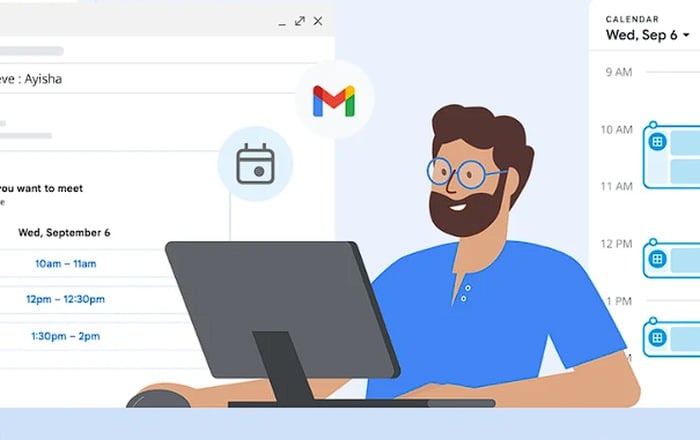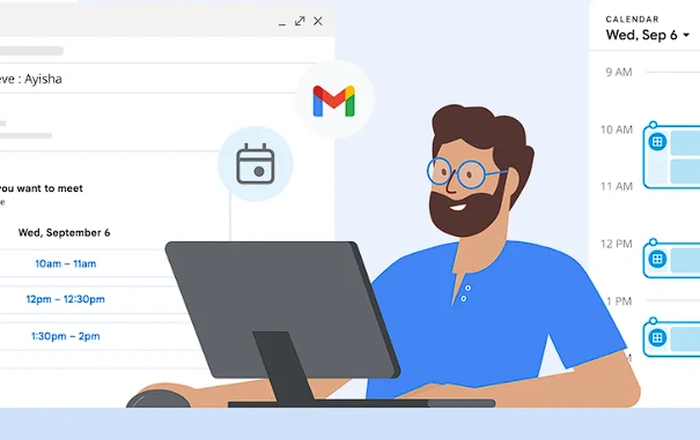This quick overview guide provides a quick tutorial for Google Gmail users that would like to learn more about how to use the new Gmail meeting scheduling feature rolled out by Google to its email service. Scheduling meetings can often feel like a burden especially with our packed schedules and time zone differences, finding a mutually convenient time can be a challenge.
However, Gmail has introduced a new feature that simplifies this process, allowing users to schedule meetings directly from their inbox, without the need to navigate separately to Google Calendar. This feature is a game-changer, eliminating the frustration of trying to coordinate with individuals whose calendars are not visible.
Schedule meetings in Gmail
To utilize this feature, one begins by composing a new email or opening a reply to an existing email. The Calendar icon at the bottom of the message is then clicked. If this option is not visible, clicking on the More options icon (represented by three dots) and hovering over “Set up a time to meet” will reveal it. The next step is to select “Offer times you’re free.” This action opens the user’s calendar in a pane to the right of the email, where one or more open time slots can be selected. These slots can be on the same day or different days.
Quick start :
- Compose a new email with recipients, or open a reply to an email you’ve received from someone you need to meet with.
- Click the Calendar icon at the bottom of your message. If you can’t see this option, click the More options icon (the three dots) and hover over “Set up a time to meet.”
- Select “Offer times you’re free.”
- Your calendar will open in a pane to the right of the email. Select one or more open time slots that work for you. You can add multiple time slots per day or add time slots on different days.
- Click “Next,” then fill out relevant fields (the title of your meeting, duration, location and description).
- Click “Add to email” to send your proposed times to your email recipients. From there, they can choose the time that works best for them. Once they choose, the event will appear on both your calendars.
After selecting the time slots, clicking “Next” allows the user to fill out relevant fields such as the title of the meeting, its duration, location, and description. Clicking “Add to email” sends the proposed times to the email recipients, who can then choose the time that suits them best. Once a time is chosen, the event will appear on both parties’ calendars.
In addition to this feature, Gmail offers two other ways to schedule meetings directly from the inbox. The first method allows users to create an event from any email in their inbox. By clicking on the More options icon at the top of the inbox and choosing “Create event,” a calendar invite with prefilled details is created.
Gmail tips & tricks
Other articles you may find of interest on the subject of Gmail :
The second method involves creating a Calendar event while composing an email. This action also inserts a smart chip with a summary of the event into the body of the email. To do this, the user follows the same initial steps as before, but instead of selecting “Offer times you’re free,” they choose “Create an event.” The calendar opens in a pane to the right of the email with the title and guests pre-filled from the email. The user then fills out the fields as needed and clicks “Save” to send the calendar invitation. This action also inserts a summary of the event into the email body.
Gmail’s new features have made scheduling meetings a more streamlined process. By allowing users to schedule meetings directly from their inbox, Gmail has eliminated the need to navigate separately to Google Calendar, saving users time and energy. These features are a testament to Gmail’s commitment to improving user experience and productivity.
Filed Under: Guides, Top News
Latest timeswonderful Deals
Disclosure: Some of our articles include affiliate links. If you buy something through one of these links, timeswonderful may earn an affiliate commission. Learn about our Disclosure Policy.


